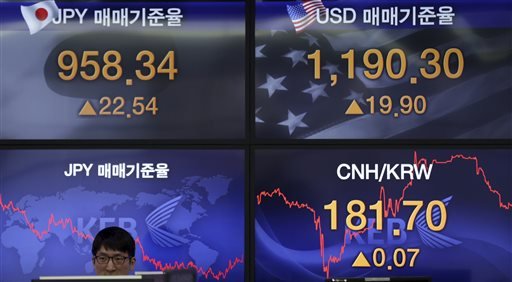-
Tips for becoming a good boxer - November 6, 2020
-
7 expert tips for making your hens night a memorable one - November 6, 2020
-
5 reasons to host your Christmas party on a cruise boat - November 6, 2020
-
What to do when you’re charged with a crime - November 6, 2020
-
Should you get one or multiple dogs? Here’s all you need to know - November 3, 2020
-
A Guide: How to Build Your Very Own Magic Mirror - February 14, 2019
-
Our Top Inspirational Baseball Stars - November 24, 2018
-
Five Tech Tools That Will Help You Turn Your Blog into a Business - November 24, 2018
-
How to Indulge on Vacation without Expanding Your Waist - November 9, 2018
-
5 Strategies for Businesses to Appeal to Today’s Increasingly Mobile-Crazed Customers - November 9, 2018
Asian stocks recover from two-day decline after China devaluation move
China’s central bank said on Thursday that its currency would remain strong in the long run, despite worries over the yuan’s devaluation.
Advertisement
The People’s Bank of China set the yuan’s midpoint rate at 6.3975 per dollar prior to market open, firmer than the previous fix at 6.401.
Since Tuesday, Beijing has broadly been setting the daily rate at which the yuan trades more in line with market levels.
Previously, authorities based the rate on a poll of market-makers, but will now also take into account the previous day’s close, foreign exchange supply and demand and the rates of major currencies.
A weaker yuan makes Chinese exports cheaper and more competitive in overseas markets.
The market reacted with surprise as the falling yuan led to a heavy sell-off in regional currencies, declines in Asian stocks and downward bulk commodities prices, as well as claims that the depreciation of the yuan was being engineered by China to rescue sluggish exports.
London’s benchmark FTSE 100 index on Thursday climbed 0.82 per cent to 6,624.86 points compared with Wednesday’s close.
“As China is Vietnam’s largest trading partner, an adjustment of Chinese currency will have a negative impact on Vietnam’s economy”, said the State Bank of Vietnam.
The national lender again tried to calm concerns over the direction of the yuan, repeating Wednesday’s assertion that there was no basis for further depreciation given strong economic fundamentals.
Sue Trinh, senior FX strategist at Royal Bank of Canada in Hong Kong, says “we are far from fairly valued” and sees the yuan dropping to 6.95 per dollar by the end of next year.
China wants to expand use of the yuan by having it included in the SDR, an worldwide reserve asset that now comprises four currencies: the U.S. dollar, euro, pound and yen. “The one-time total depreciation of around 3% is largely finished… and is a necessary phase in exchange rate reform”.
But the global Monetary Fund said the renminbi’s devaluation was a “welcome step”.
It looks like the People’s Bank of China Bank of China answered those questions this morning.
Advertisement
“The crisis management measures from the PBOC including intervention in the spot market and press conference have clearly set the boundary for the yuan”, Tommy Xie, an economist at Oversea-Chinese Banking Corp.in Singapore, wrote in a note on Friday. As emerging market currencies slide, exporting “waves of deflation to the West”, said Albert Edwards of Societe Generale, they will overwhelm lacklustre developed world profitability, taking us back to “outright recession”.





























